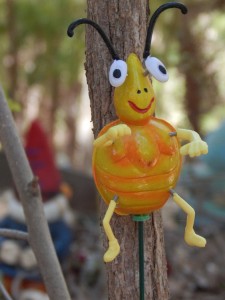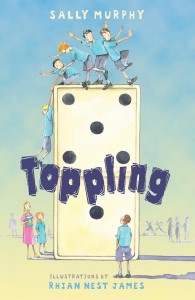It’s Friday, which means it’s Poetry Friday and, once this post is written, I will have managed to post every week this year! Of course I do realise it’s only week 3, but still a good sign that I’m going to do better this year).
First up, thanks to everyone who visited last week, when I hosted the weekly round up, and for all the lovely comments and messages of support for Australia. Like many Australians, I am blown away by the generosity coming from around the world – not just in the form of donations, but also messages of solidarity and hope as well as so many statements urging leaders to wake up and take more drastic action to prevent climate change and start saving our planet.
Onto the poetry. This week I set the goal to write something – anything – every day, preferably before heading out the door to my dayjob. And I managed to write something everyday. More pleasing, most of it was poetry, including progress on a verse novel I started before Christmas. Early days, but it’s just lovely to be creating.
On Monday, on my early morning walk, I spotted some words carved into the footpath – obviously done while the concrete was still wet. I snapped a photo and walked home pondering what would lead to someone carving those words there. More often you see initials, or paw prints or – and I love spotting these – the prints of leaves that have fallen onto the setting concrete. I was so taken by these words that I didn’t even notice some spelling quirks (which is most unlike this teacher!).
So, when I sat down after breakfast to write, it didn’t surprise me that my thoughts went back to that footpath. I wanted to explore not the meaning of the words, but the intention of the scribe. Here’s what I came up with:
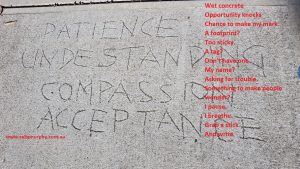
The poem reads:
The Scribe
Wet concrete
Opportunity knocks
Chance to make my mark.
A footprint?
Too sticky.
A tag?
Don’t have one.
My name?
Asking for trouble.
Something to make people wonder?
I pause.
I breathe.
Grab a stick
And write.
(Copyright Sally Murphy, 2020)
It was only later that I remembered I had written on a similar topic before and went searching for those poems, first drafted on a visit to Rottnest Island (off the WA coast and home to the world-famous quokkas). I was there on a retreat with SCBWI pals, and on a sketch and scribble we stopped under this tree, which, from memory, may have been a young Moreton Bay Fig. I was drawn to the many names carved into the trunk and initially a bit cross that people would do this to a tree. That’s where this poem came from:

The poem reads:
The Name Tree
You are a thing of beauty
stretching grey-brown limbs skywards.
A testament to your will
to stand
against stiff sea-breezes
and salty spray.
But I don’t get why your trunk
must be scarred
by careless humans
wanting to leave a sign
that they were once here:
Ron + Therese
Sue
Hadly, Tony and
KC
all were here.
But now they’re not
and all that’s left of them
is their marks
scratched into your bark.
(Poem copyright Sally Murphy)
After I’d written that I had a little longer to sit and think. At the time I was working on a collection of poetry with paired poems, each pair looking at the same topic from differing perspectives. So I started to wonder what the other perspective was here. And I started to think about why we have this urge to leave our mark. Tony’s name was the most prominent, and I started to think of him as a small boy wanting to make a big mark, in the hope those who read it would imagine him as perhaps bigger, more accomplished than he saw himself. This was the result:
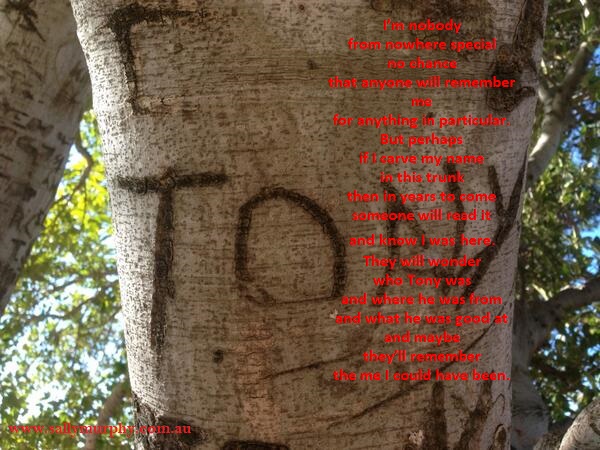
The poem reads:
The Tony Tree
I’m nobody
from nowhere special
no chance
that anyone will remember me
for anything in particular.
But perhaps
if I carve my name
in this trunk
then in years to come
someone will read it
and know I was here.
They will wonder
who Tony was
and where he was from
and what he was good at
and maybe
they’ll remember
the me I could have been.
(Poem copyright Sally Murphy)
On another walk on Rottnest, this time alone, I came across some rocks on the shore where, again, people had been carving their names. I sat on one of these rocks and just breathed in the amazing view, but I couldn’t help but again wonder about the need to leave a mark. I had no urge, but my younger self probably would have, and I wondered what could justify needing to carve like that. What would someone crave that would really speak to future visitors? This is what I wrote:
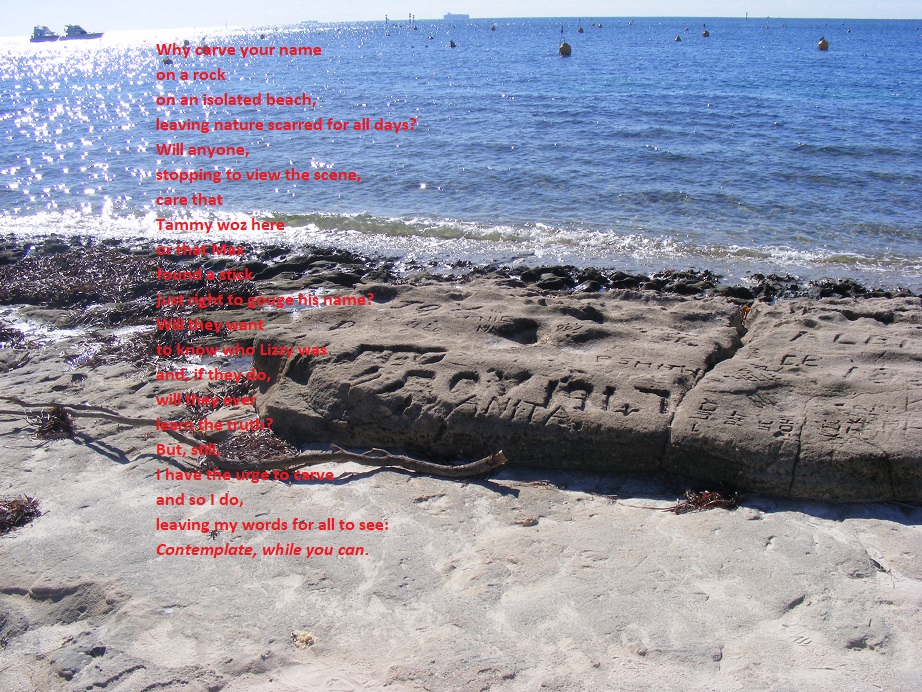
The poem reads:
Grafitti
Why carve your name
on a rock
on an isolated beach,
leaving nature scarred for all days?
Will anyone,
stopping to view the scene,
care that
Tammy woz here
or that Max
found a stick
just right to gouge his name?
Will they want
to know who Lizzy was
and, if they do,
will they ever
learn the truth?
But, still,
I have the urge to carve
and so I do,
leaving my words for all to see:
Contemplate, while you can.
(Poem copyright Sally Murphy)
I imagined some philosopher, wanting people to use those rocks to seize a few moments for quiet contemplation, but can also see now that that ‘while you can’ could also be a bit of a warning – ie contemplate this natural beauty while it’s still here. And it’s only while I write this post that I wonder if my imagined philosopher was also the person who, years later, left those words in the path for me to see?
So I am poeming once more – with new poems and reconnecting with older ones. – and this is good. Just in time, too, because this week I am having an ‘In Conversation’ with my amazing poet friend Rebecca Newman at Paperbird Bookshop in Fremantle. If you are nearby, drop by to hear us chat all things children’s poetry (or as much as we can fit into one session!). It’s a free event, to celebrate the end of Rebecca’s residency at Paperbird. You can book here. And, if you are across the country or across the world, I’ll share some highlights next Poetry Friday.
Phew. What a long post. I’m sure you are itching to see what other poetry goodness has popped up around the blogosphere today. the roundup is over at Reading to the Core, thanks to Catherine who is hosting this week.
